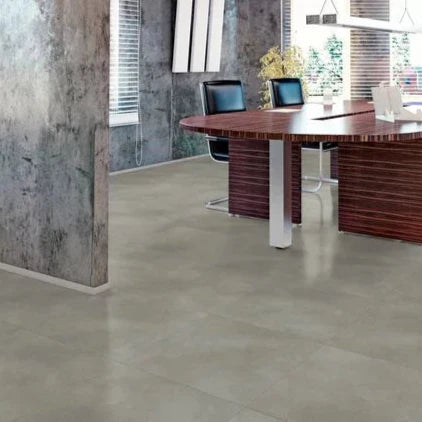
Who Invented Linoleum And Why Was It So Popular?
Share
As is the case for a lot of revolutions in interior design, there was a need for a hard-wearing, affordable, flexible and versatile flooring solution long before it was widely available.
In the modern age, that solution is luxury vinyl tile flooring (LVT), which uses multiple engineered layers to provide the most durable flooring solution for the lowest weight and the lowest cost.
As the technology used to produce the pattern or imagery layer has become more sophisticated, they have even been able to more closely resemble tile, wood or even stone.
Before there was LVT, however, there were fascinating lino flooring solutions that in certain use cases still remain popular to this day, even if to a lesser extent than LVT.
To understand why, it is important to understand who accidentally invented linoleum, its natural and sustainable credentials, and what caused it to fall out of favour after nearly a century of success.
Who Invented Linoleum And How?
Before there was LVT, there was linoleum, a somewhat similar floor covering that consisted of layers of linseed oil, cork, wood flour, flax, canvas and colour pigments, all pressed together to create wall-to-wall rolls or tiles.
It was invented by Frederick Walton in 1855, and much like laminated glass and penicillin, it was the result of a rather serendipitous error.
At the time, linseed oil was primarily used as a paint thinner, but when Mr Walton forgot to properly close the container he was using, it formed a solid coating on top.
Peeling the skin off, he started to see if there could perhaps be any uses for the skin, and whether it could be produced both deliberately and more quickly than the overnight slip of the mind.
It took him a very long time to develop an effective process; his first linoleum patent led to the production of small amounts of an expensive varnish nobody wanted, his factory burned down, and the use of intense ingredients such as lead acetate gave him rashes he would suffer with for a long time.
By 1864, he established a company to make lino, but struggled to establish it against cork flooring and oilcloth, and even when it finally became a household name, companies such as Michael Nairn & Co had developed faster, cheaper processes, and linoleum quickly became a genericised trademark with intense competition as a result.
Why Was Linoleum So Popular?
There were three huge advantages to linoleum compared to other flooring solutions on the market; it was cheaper than most natural solutions, more durable than oilcloth and had the potential for very versatile designs.
It could be used to replicate ornate tile designs, could be embossed to create elaborate textured designs and could, through clever colour mixing, be used to resemble various types of stone.
One difference lino had compared to certain types of vinyl flooring is that the colour was not confined to a single layer but bled through the entire sheet.
This meant that there was no point at which the pattern would wear through, giving lino remarkable longevity for its price.
At the time, it was also one of the most affordable alternatives to ceramic tiles for use in kitchens, as its water resistance and relative comfort and softness underfoot made it easier to stand in the kitchen for longer periods of time and meant that dropped plates or cups would not necessarily break immediately.
Where Did Linoleum Go?
Linoleum in this traditional form has always been sold in one way or another, but it stopped being the dominant flooring solution in bathrooms and kitchens by the middle of the 20th century.
Today, many people who discuss lino will be more likely to be talking about LVT than linoleum, and the reason for this is the arrival of an alternative that meets the average needs of customers better.
LVT was more versatile and could be produced in brighter colours, had greater fire resistance, and once the economies of scale evolved around polyvinyl chloride (PVC), it became cheaper to make and cheaper to buy.
Is Linoleum Still Around?
Traditional high-quality lino is still available and still widely used in some specialist markets such as healthcare, as it has certain antibacterial and hypoallergenic properties that are not always guaranteed with LVT flooring solutions.
It is even seeing a resurgence because it is made from organic materials, making it renewable and biodegradable, something that provides it with a strong environmental case and ensures that there will always be people and businesses wanting it for decades to come.
